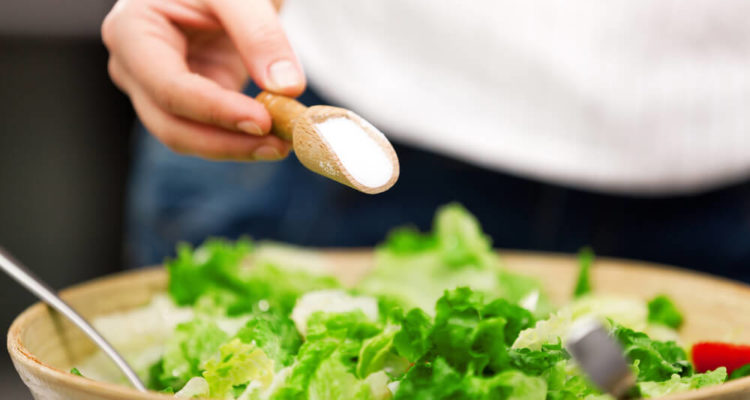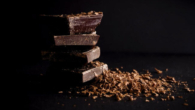
5 scientifically proven ways to remove excess salt from the body
0
Eat bananas and try sweat more.
How much salt can you eat
Scientists are not exactly sure how much sodium chloride (NaCl) a person should eat to avoid harm to health. The WHO recommends limiting the intake of salt to 5 g per day, the British National Health Service increases the acceptable limit to 6 g.
It is unlikely that you greatly exceed this dose. According to statistics, only 22% of the population from 49 developed countries consume more than 6 g of pure sodium (or 15 g of sodium chloride) daily, the amount above which the risk of cardiovascular disease and related mortality increases dramatically. Most people eat no more than 6-8 g.
However, even a slight excess of the norm can be harmful. The reason is that salt can accumulate in the body. By attracting moisture, it increases the blood volume and, accordingly, the load on the heart, blood vessels, liver, and kidneys.
How to know if there is too much salt
There are no available laboratory tests that can measure salt content. You can take a sodium test, but it will tell you more about the general condition of the body and the performance of various organs than about the excess of salt.
It can be assumed that you eat a lot of salty food, mainly based on indirect signs. The American resource LiveStrong, dedicated to a healthy lifestyle, interviewed nutritionists and doctors of medicine. And he discovered four symptoms that hint that you have an excess of salt. Note: all of them are indicative only if you are healthy and do not have chronic diseases.
- You often want to drink.
- You regularly have mild swelling. For example, the fingers or feet around the ankles swell, the face becomes swollen.
- Vegetables, bread, cereals, other ordinary foods seem tasteless to you. You want to salt them.
- Your blood pressure started to rise.
How to remove excess salt from the body
The most the obvious option seems to be: drink more water. The liquid will dilute the salt and remove it through the kidneys. But in fact, this method is doubtful.
Our body is arranged in such a way that the amount of water and the level of sodium in the body are interconnected. Approximately the same amount of sodium (and other electrolytes, but they are not very important in this case) is always dissolved in body fluids. This indicator is called osmolarity.
In order for a person to remain healthy, osmolarity must remain within a certain, rather narrow range. Therefore, when you drink and the amount of water increases, the body begins to retain sodium with all its might in order to maintain its concentration.
Thus, drinking water specifically to get rid of excess salt is not the best solution. There are much more effective and scientifically recognized methods.
1. Go to training
The more energetic it is, the faster and more you will sweat. So, you will start to lose moisture. In this way, the osmolality will go beyond the healthy range, and in order to keep it normal, the body will begin to get rid of sodium.
Salt is excreted with sweat, which is why it has a characteristic aftertaste.
< 2. Sit in a bath or sauna
If, of course, you do not have any disease in which such procedures are prohibited.
The scheme for getting rid of salt here is the same as in the previous case. Due to the high temperature, the body loses moisture, and sodium is also excreted in its wake to maintain the electrolyte balance.
3. Avoid dehydration, but avoid sports drinks
If you are actively sweating during training, you need to restore the amount of moisture in your body. At least in order to have something to sweat on and with which to remove salt. Also, if you lose too much fluid and don't replace it, you risk dehydration and the associated hypernatremia. This is the name of a dangerous condition in which the level of sodium in the blood rises sharply: the body simply does not have enough moisture to keep the osmolarity in the normal range.
Therefore, watch how much you drink during the day. On average, the norm is as follows:
- men should drink at least 3 liters of water per day;
- women – at least 2.2 l.
The necessary moisture can be obtained from various sources: compotes, juices, tea. And sports drinks. They are often recommended to people who are actively training, because such liquids contain carbohydrates and electrolytes. But if right now your goal is to get rid of excess salt, it is better to give up such drinks. In many of them, in addition to other electrolytes, large doses of sodium are added.
4. Eat foods rich in potassium
It helps remove sodium from the body. This is noted by experts of the American Heart Association. And it is recommended to use potassium-rich foods to reduce the salt level:
- banana;
- avocado;
- potato;
- greens;
- spinach;
- mushrooms;
- peas;
- tomatoes and tomato juice;
- oranges and orange juice ;
- plums, apricots and their juice;
- raisins and dates;
- skimmed or low-fat (up to 1%) milk;
- low-fat yogurt;
- tuna and halibut.
5. Try taking a diuretic
These can be over-the-counter pills or herbal tea with a diuretic effect. According to the Mayo Clinic, such products help the kidneys quickly remove excess sodium from the body.
But in no case do not drink diuretics, even if it is just herbal tea, on a regular basis. Their excessive use can lead to a critical decrease in sodium and potassium levels. And this is dangerous for health.









Leave a Reply